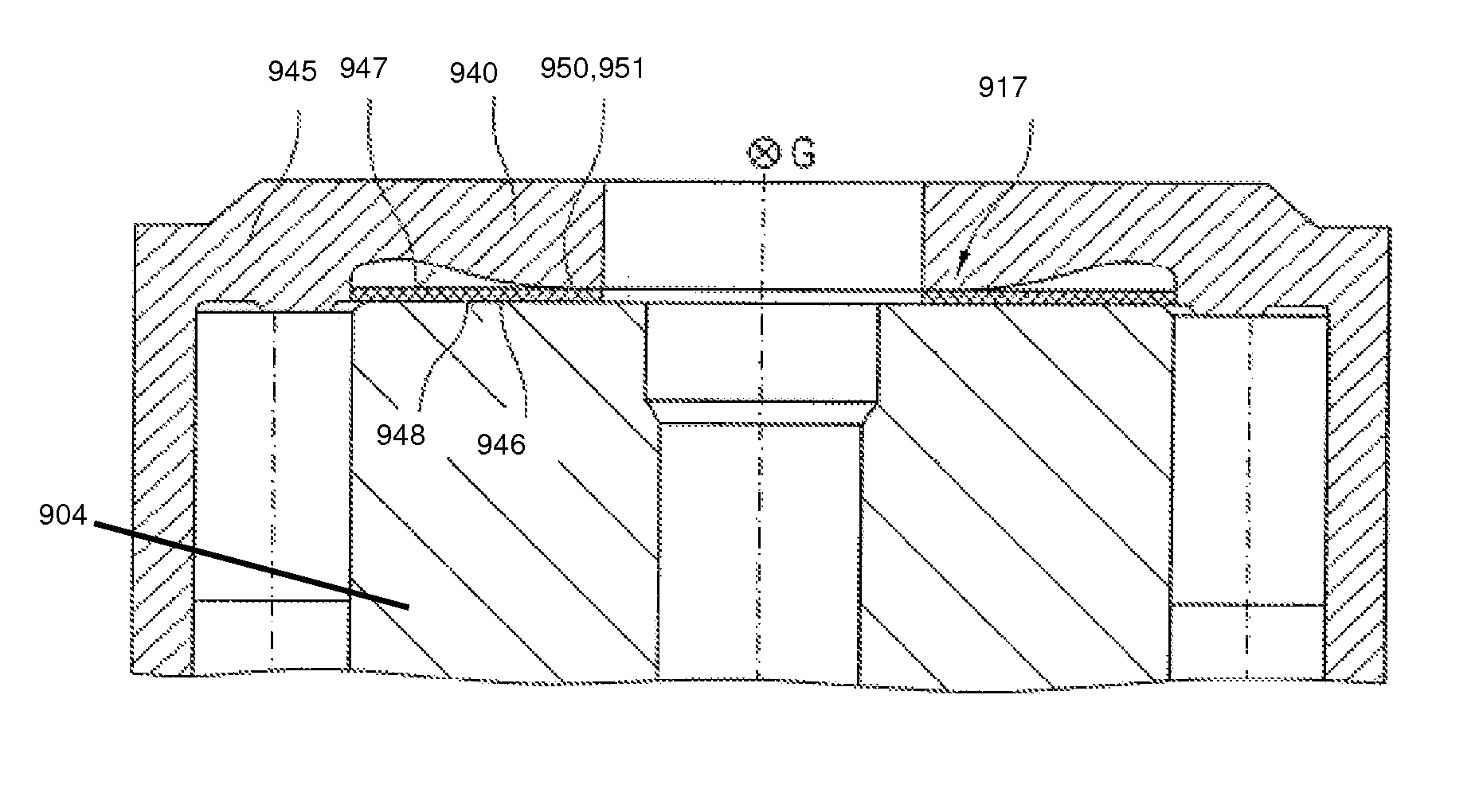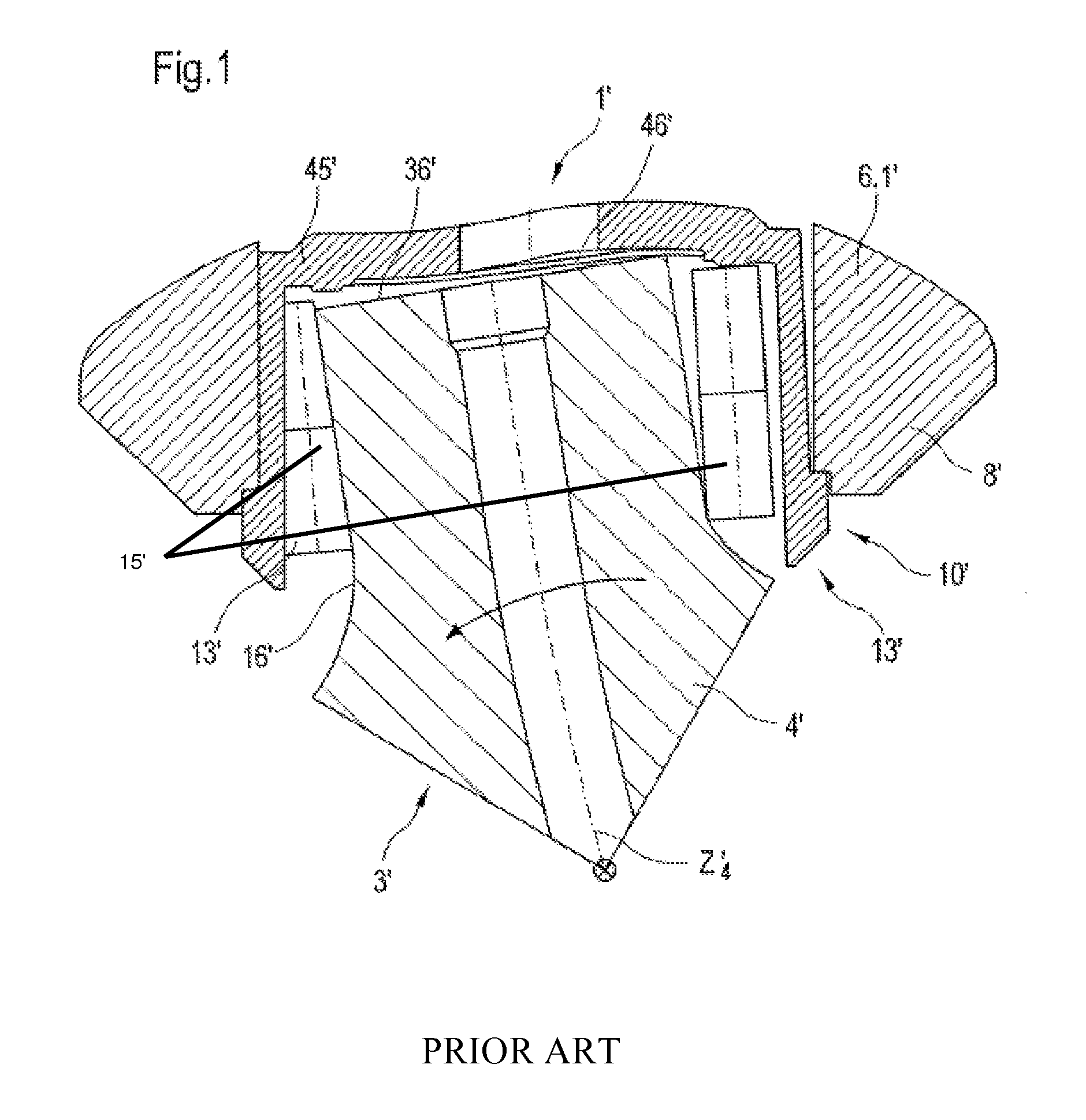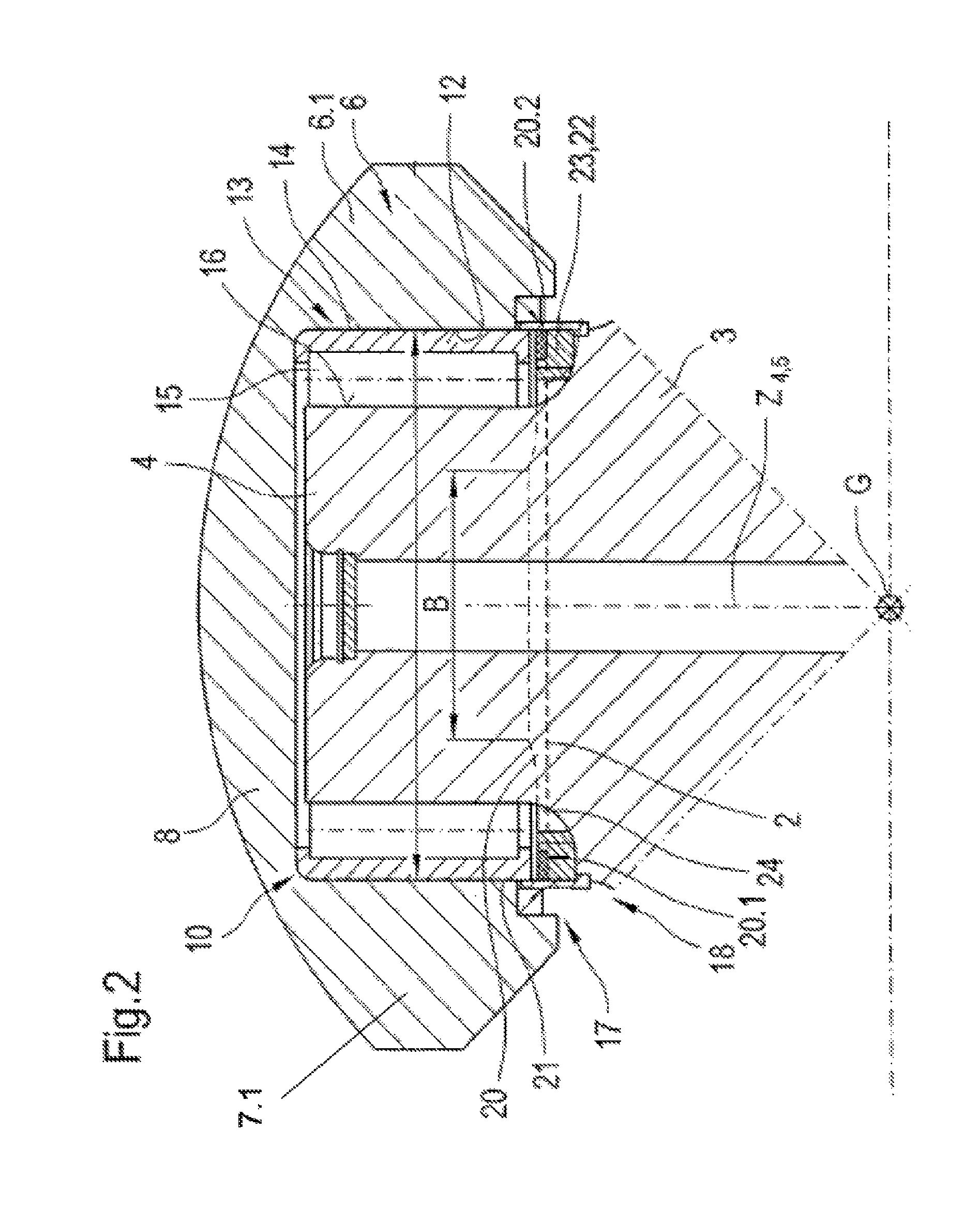Universal joint arrangement
a universal joint and joint technology, applied in the direction of shafts and bearings, rotary combination bearings, rotary bearings, etc., can solve the problems of uneven radial pressure distribution, unfavorable load application, and joint yoke elastic deformation, and achieve low number of components, eliminate negative influences of torque transferring components, and simple structure
- Summary
- Abstract
- Description
- Claims
- Application Information
AI Technical Summary
Benefits of technology
Problems solved by technology
Method used
Image
Examples
Embodiment Construction
[0033]FIG. 1 illustrates in greatly exaggerated representation of the deformations of the components in a prior art universal joint system 1′, the problem underlying the solution according to the invention of the effect of relative movements in axial direction of the journal on the bearing system of a journal cross 3′ of a joint yoke 6′ with the help of a section from an axial section through the journal cross 3′. Represented in exemplary fashion is a journal 4′ having an axis Z4 which is supported by bearings via a bearing system 10′ in a joint yoke half 6.1′. Further recognizable is a bearing part 8′ of the joint yoke half 6.1′. The bearing system 10′ comprises a radial bearing 13′. In the represented case the inner bearing track of the anti-friction elements 15′ of the radial bearing 13′ is formed by the generated surface 16′ of the journal 4′. The exterior bearing surface is formed by a bearing bushing 45′. In the case of torque transfer the circumferential force causes an uneve...
PUM
 Login to View More
Login to View More Abstract
Description
Claims
Application Information
 Login to View More
Login to View More - R&D
- Intellectual Property
- Life Sciences
- Materials
- Tech Scout
- Unparalleled Data Quality
- Higher Quality Content
- 60% Fewer Hallucinations
Browse by: Latest US Patents, China's latest patents, Technical Efficacy Thesaurus, Application Domain, Technology Topic, Popular Technical Reports.
© 2025 PatSnap. All rights reserved.Legal|Privacy policy|Modern Slavery Act Transparency Statement|Sitemap|About US| Contact US: help@patsnap.com



